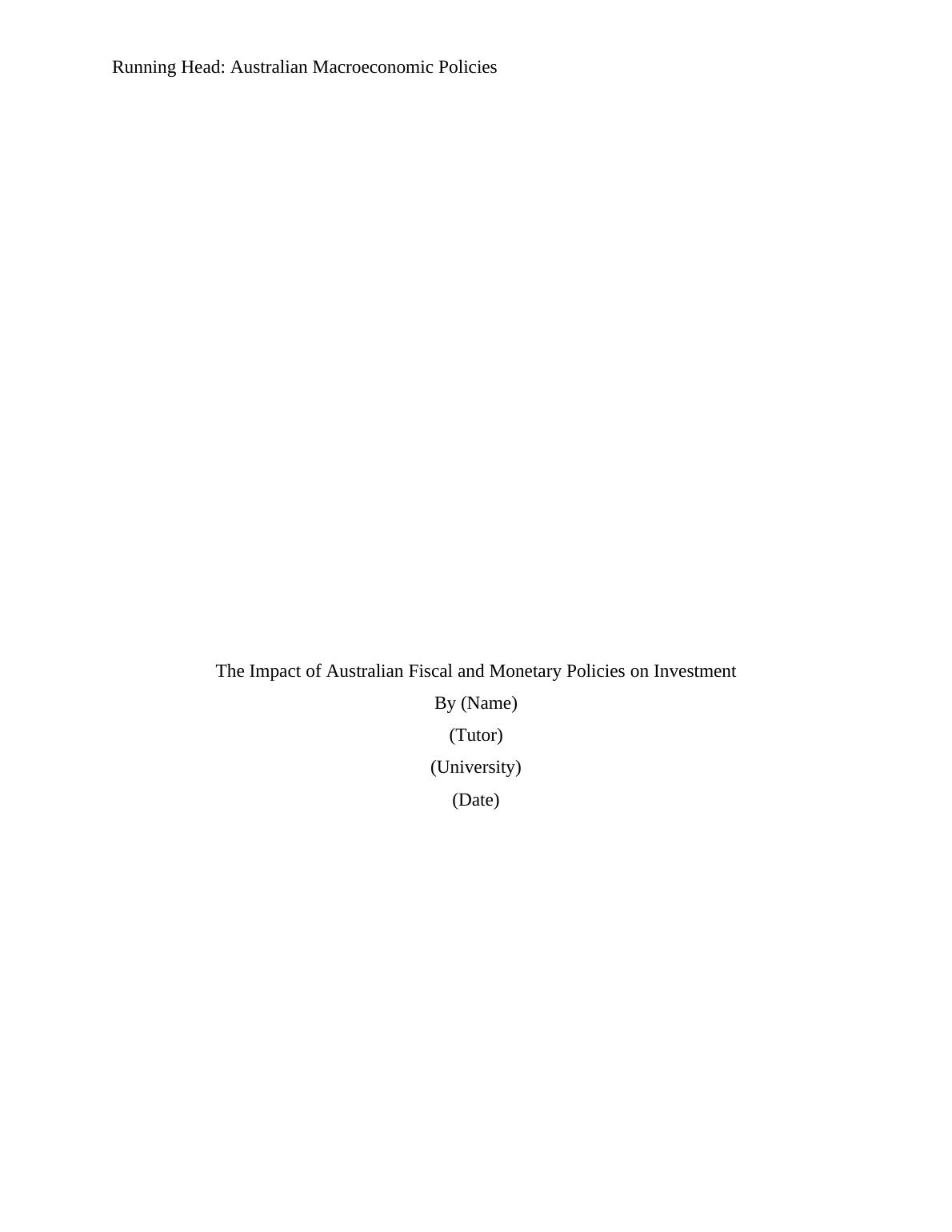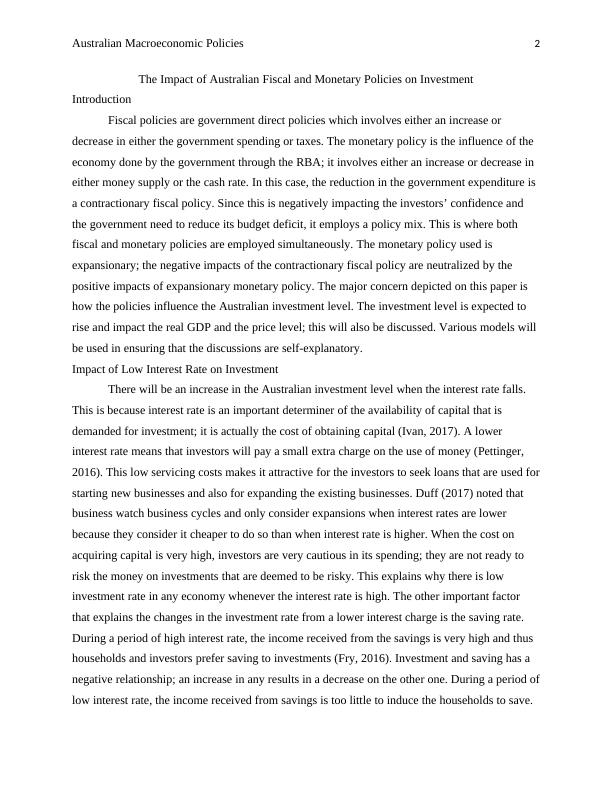The Impact of Australian Fiscal and Monetary Policies
Added on 2020-05-11
5 Pages1304 Words160 Views
Running Head: Australian Macroeconomic PoliciesThe Impact of Australian Fiscal and Monetary Policies on InvestmentBy (Name)(Tutor)(University)(Date)

Australian Macroeconomic Policies2The Impact of Australian Fiscal and Monetary Policies on InvestmentIntroductionFiscal policies are government direct policies which involves either an increase or decrease in either the government spending or taxes. The monetary policy is the influence of the economy done by the government through the RBA; it involves either an increase or decrease in either money supply or the cash rate. In this case, the reduction in the government expenditure is a contractionary fiscal policy. Since this is negatively impacting the investors’ confidence and the government need to reduce its budget deficit, it employs a policy mix. This is where both fiscal and monetary policies are employed simultaneously. The monetary policy used is expansionary; the negative impacts of the contractionary fiscal policy are neutralized by the positive impacts of expansionary monetary policy. The major concern depicted on this paper is how the policies influence the Australian investment level. The investment level is expected to rise and impact the real GDP and the price level; this will also be discussed. Various models will be used in ensuring that the discussions are self-explanatory. Impact of Low Interest Rate on InvestmentThere will be an increase in the Australian investment level when the interest rate falls. This is because interest rate is an important determiner of the availability of capital that is demanded for investment; it is actually the cost of obtaining capital (Ivan, 2017). A lower interest rate means that investors will pay a small extra charge on the use of money (Pettinger, 2016). This low servicing costs makes it attractive for the investors to seek loans that are used forstarting new businesses and also for expanding the existing businesses. Duff (2017) noted that business watch business cycles and only consider expansions when interest rates are lower because they consider it cheaper to do so than when interest rate is higher. When the cost on acquiring capital is very high, investors are very cautious in its spending; they are not ready to risk the money on investments that are deemed to be risky. This explains why there is low investment rate in any economy whenever the interest rate is high. The other important factor that explains the changes in the investment rate from a lower interest charge is the saving rate. During a period of high interest rate, the income received from the savings is very high and thus households and investors prefer saving to investments (Fry, 2016). Investment and saving has a negative relationship; an increase in any results in a decrease on the other one. During a period oflow interest rate, the income received from savings is too little to induce the households to save.

End of preview
Want to access all the pages? Upload your documents or become a member.
Related Documents
Introduction to Business Environmentlg...
|18
|1288
|100
Macroeconomicslg...
|7
|695
|85
Fiscal and Monetary Policy Impacts on Social Media Sectorlg...
|10
|2636
|70
Introduction to the Business Environmentlg...
|10
|2525
|83
Global Business Environment - Doclg...
|5
|787
|449
Macroeconomics Assignment Solvedlg...
|12
|2536
|80
